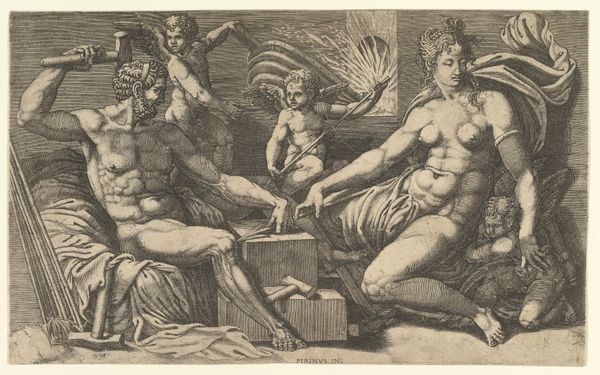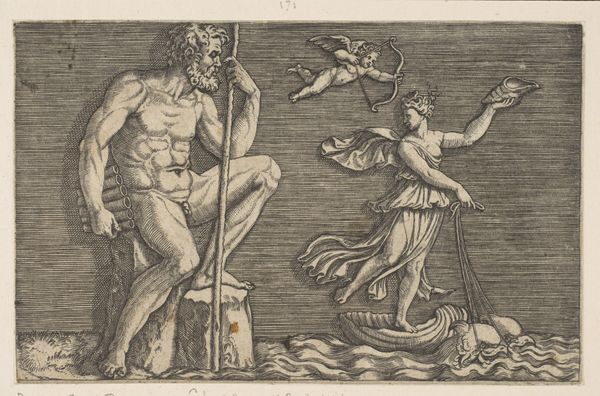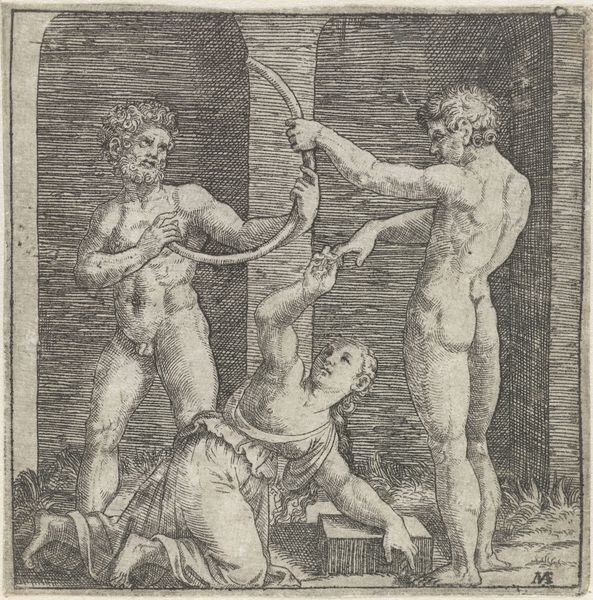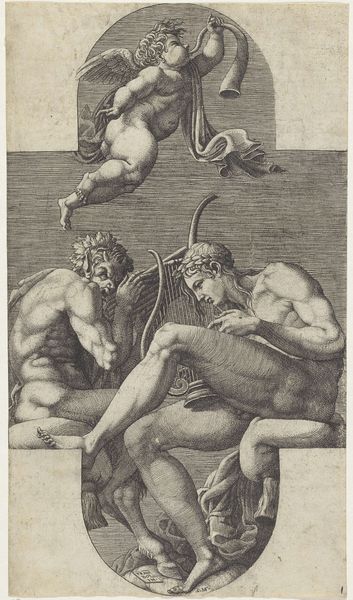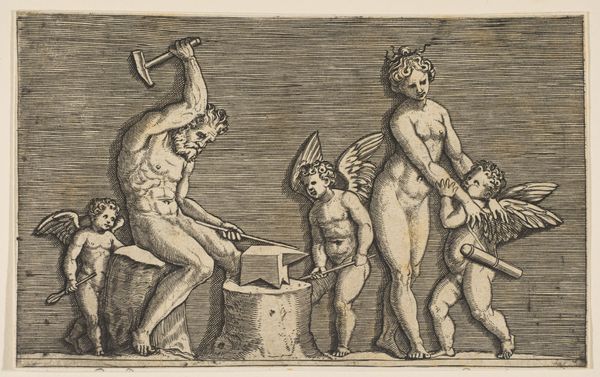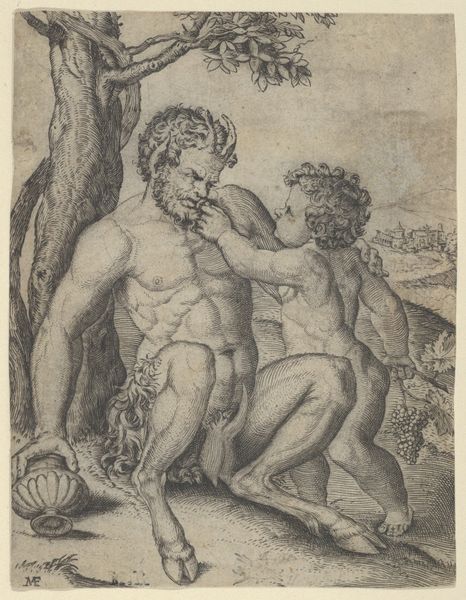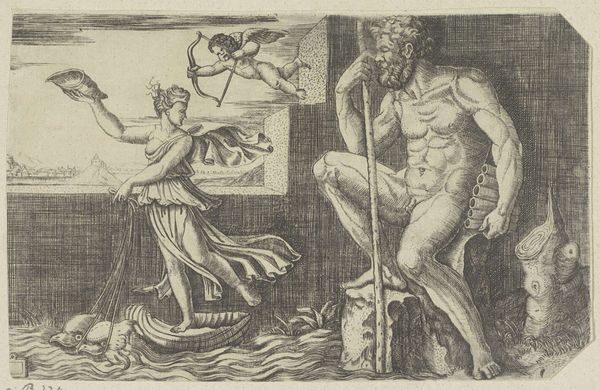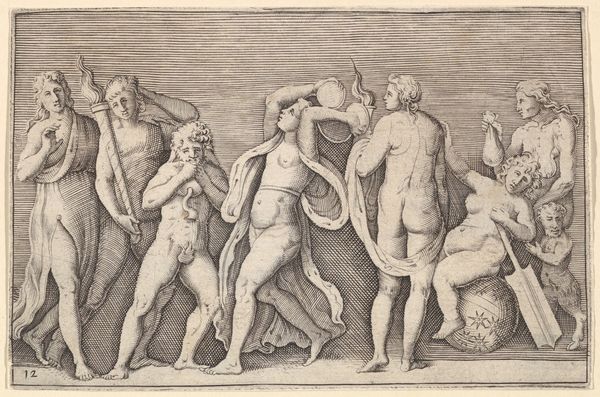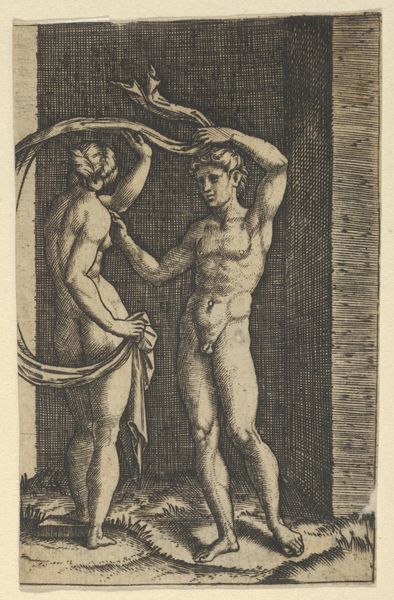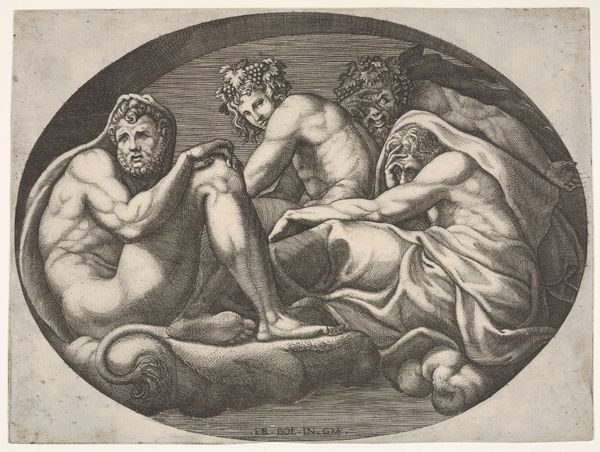
drawing, print, engraving
#
drawing
#
allegory
# print
#
figuration
#
11_renaissance
#
child
#
pencil drawing
#
ancient-mediterranean
#
italian-renaissance
#
engraving
Dimensions: 5 7/8 x 6 7/8 in. (14.9 x 17.4 cm)
Copyright: Public Domain
Curator: This engraving, titled "Two Fauns Carrying a Child," was created sometime between 1500 and 1600 by an anonymous artist. What's your first impression? Editor: It's striking how much it focuses on labor. You immediately see these figures, presumably fauns, struggling to carry the weight of this woven contraption and child. There's a real sense of physicality. Curator: Absolutely. I see this as an allegory, maybe touching on themes of burden and care within ancient mythological frameworks. The fauns, symbols themselves, further layer the complexity. Editor: Thinking about it materially, this engraving required immense skill and time to produce. The process would have demanded a careful selection and treatment of materials. We're seeing a dedication to craft right here. What's really striking is the relationship of their labor to the child being carried. Curator: Yes, and it prompts us to consider not only their physical work, but how this labor intersects with representations of masculinity. The child becomes central to disrupting those power dynamics through dependence. Editor: And the way that weight shifts—we can trace the physical realities of their labor but then think of that relationship in terms of production or what labor enables. There is a connection being made through these material components. Curator: Considering contemporary contexts, it also challenges our notions about reproductive labor and who bears the brunt. This piece offers an old depiction that somehow feels profoundly current. Editor: For me, the tactile aspect—the texture and process that bring figures and the story to life, really deepens my understanding of the world it represents. Curator: Reflecting on the engraving, it’s clear that this artist, though unknown, had a profound ability to blend artistic skill with poignant commentary on gender and societal burdens. Editor: The means of making reveals so much about cultural priorities—and how these priorities can become powerful aesthetic forms. It pushes me to examine how labor and making continue to reflect those forces.
Comments
No comments
Be the first to comment and join the conversation on the ultimate creative platform.

